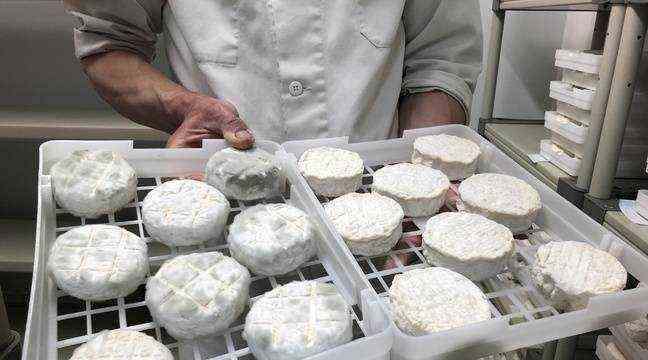“Fingers full”: Why can Saint-Marcellin be soft but also dry? – 20 minutes
- France is the country of cheese. It has so many that it is difficult to know the exact number. More than 1,000 assuredly, including 45 protected designations of origin.
- AT 20 minutes, we love cheese, so we went to discover the cheeses of our eleven local editions.
- We continue our Tour de France with Saint-Marcellin, a small round cheese born in Isère in the 15th century. If it is very appreciated for its soft texture, it is historically drier in its region of Dauphiné.
From an appearance in the 15th century in Isère to a spotlight last March in a program by
Top chef, Saint-Marcellin has made its way into the landscape of French cheeses. In particular made famous in the Lyon region thanks to the
Mother Richard, this round cow’s milk cheese has been produced under Protected Geographical Indication (PGI) since 2013. For purists in this specific geographical area of Dauphiné, which concerns Isère, but also Drôme and Savoie, there is no doubt that there is not just one Saint-Marcellin.
Depending on the producer, the season and the ripening, the result can be rather dry, supple, mellow or “leaky”, with a more or less assertive taste. Farmer from Saint-Marcellin, and one of the five partners of GAEC des Essarts in Plan (Isère), Vincent Bernard describes this cheese as “consensual”. “It’s a small cheese that is easy to eat and to present on a table,” specifies the one who is recently
intervened in Top chef. We don’t have to buy large volumes. “
Notes of hazelnut and honey for the mellow Saint-Marcellin
Of the 2,500 tonnes of Saint-Marcellin sold last year, most of it concerns the soft version. “You just need to let the Saint-Marcellin dry out less and keep it in a rather humid room to make it softer,” explains Vincent Bernard. In the dry, it stays longer in the dryer, and in general it turns blue with age. In terms of taste, the mellow has notes of hazelnut and sometimes honey, while the blue has woody, mushroom flavors. The softness tends to flow and be borderline spreadable. And that appeals to young consumers a lot. “
A trend contrasting with historical consumption in the Dauphiné. “Even today, it is above all the blue-sec that is popular around the city of Saint-Marcellin,” says Vincent Bernard. In addition to the precise geographical area, which concerns Isère but also Drôme and Savoie, the Saint-Marcellin must be made in dimensions (diameter from 65 to 80 mm) and with a “very rigorous” weight (at least 80 g ). Saint-Marcellin is also the star food of typical dishes of the region. The most famous of them, the Marcelline, is a puff pastry turnover hiding a slice of smoked breast and a half Saint-Marcellin. “It’s our own tartiflette,” smiles Vincent Bernard.

